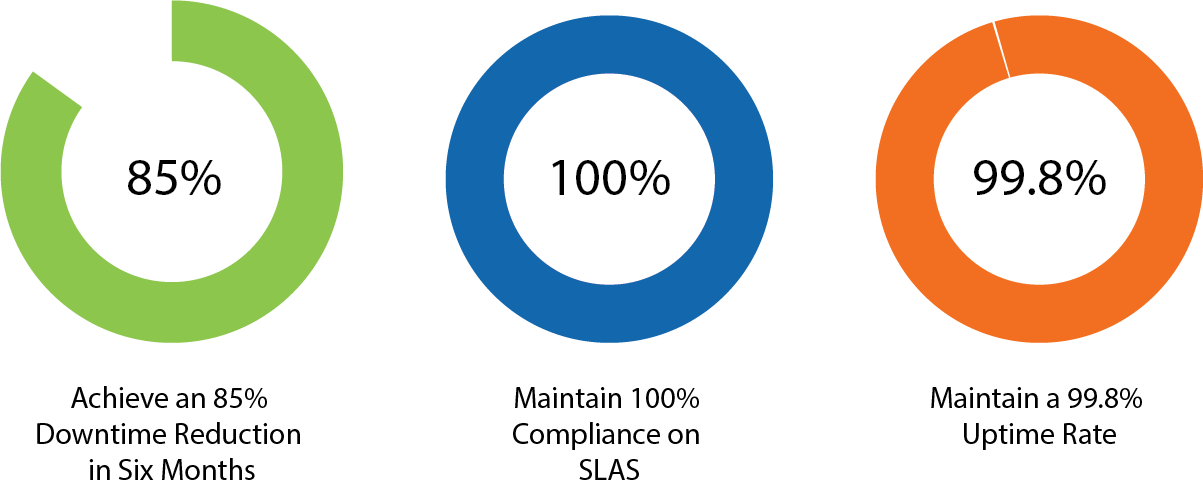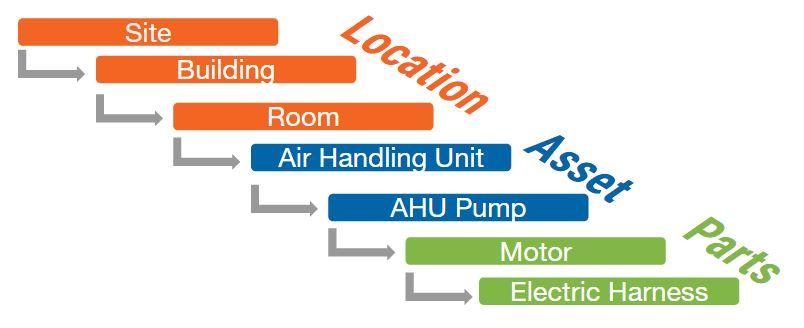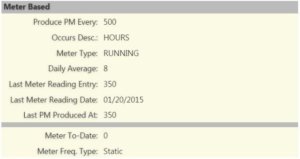What is a Preventive Maintenance Plan?
A preventive maintenance plan attempts to help you proactively perform maintenance, repairs, and replacements so that you can prevent failures before they ever have the chance to occur. A preventive maintenance plan will keep your operation running efficiently, extend the lifetime usage of your assets, and bring your maintenance costs down.
By designing an effective Preventive Maintenance (PM) program, organizations can experience substantial improvements in their overall business processes, including increased productivity, decreased waste, improved work execution and reduced unexpected breakdowns.
Compare these benefits to the statistics of organizations currently operating in a reactive mode:
- Most maintenance organizations operate between 10% to 40% efficiency
- Most spend more than 50% of time on emergency work
- Reactive maintenance costs 3-5 times more than preventive maintenance
These metrics can mean falling just short of corporate or production goals and complying with safety regulations or Service Level Agreements. How would your business landscape change if you went from 40% efficiency to 60%? What about 80%? What could you do to leverage that boost in productivity?
What Do World Class PM Programs Look Like?
World class maintenance programs embrace a proactive approach, in which preventive maintenance represents 60% or more of all maintenance activity, and firefighting is not a daily challenge. Effective maintenance programs reflect an organization’s future goals, and integrate best practices of planning, implementation and evaluation. PM programs contain planning, scheduling, coordination and reliability support throughout an organization.
World class maintenance programs help organizations improve quality, reduce costs, increase equipment uptime, increase Overall Equipment Effectiveness (OEE) and more. The focus shifts from reacting to problems and a “keep it running” ideology to performance analysis and continuous process improvement.
For example, here’s a few client success stories from those who have implemented PM programs:
- Achieved an 85% Downtime Reduction in Six Months
- Maintained a 99.8% Uptime Rate
- Maintained 100% Compliance on SLAS

So, what goes into designing a Preventive Maintenance program? To help you get started, eMaint developed six steps to create an effective, world class Preventive Maintenance program.
1. Identify the End Goal
The most effective way to begin developing procedures for PM programs is to start with the end in mind. What does your company want to accomplish? Define your procedures to align with organizational goals. For example, many manufacturing organizations focus on improving work efficiency. This goal helps guide your processes in order to reap benefits such as reducing equipment downtime, improving work completion rates, and maximizing production time available per machine. Other organizations want to ensure regulatory compliance. With this focus, results such as improved planned maintenance percentage, labor tracking and work history will follow suit.
2. Determine Asset and Equipment Hierarchy
Another vital step to developing a PM program is to identify asset equipment lists (an inventory of your fixed assets) and set up asset hierarchical structures. An asset hierarchy is the relationship between the highest level of equipment and subordinate units, which allows you to easily identify which assets you can perform maintenance on versus all of your tangible pieces, parts and/or equipment. Here are a few tips to begin creating an asset hierarchy:
Again, start with the end in mind. Consider what makes equipment valuable or critical to your organization.
- What is the total cost of ownership for a particular piece of equipment?
- If this piece of equipment goes down, how is safety impacted?
Make sure your asset hierarchy is unique. Your hierarchical asset structure should not be cut and pasted from another source. Put a good deal of thought into why it makes sense for your organization.
- For example, look at a building diagram of your asset domain. What natural groupings do you notice? What is the natural geography that drives your decision making?
- Develop “parent-child relationships” for assets. For example, in an equipment hierarchy, a tractor might be classified as two levels above its carburetor system.

Rank assets based on criticality. Ranking assets by criticality helps organizations create asset hierarchies. Asset Criticality Ranking is a tool to evaluate how asset failures impact company-wide performance and help organizations prioritize work. What equipment failures would have the most detrimental to production, fulfilling customer orders, or safety for your organization? Those are your highest ranking assets.
3. Establish Job and Labor Resources
Preventive Maintenance programs , whether written or stored on a Computerized Maintenance Management System, should also include a list of resources necessary to perform work, such as scissors lifts, forklifts, drills, wrenches, etc. A job plan should provide information on job scope, crafts, and hours to allow the supervisor to assign and schedule the correct skills.
Crafting job plans will help keep labor organized, controlled and efficient. They offer support to avoid delays and a head start on other job information for the technicians. An effective job plan includes:
- Step-by-step information on how to complete work
- A list of specific tools required to complete work
- A list of skills required to complete work
- Bill of materials and parts list
- Any associated photographs, diagrams, maps, etc.
- Standard Operating Procedures (SOPs) necessary to complete work
- Any critical safety instructions, lockout tagout procedures, etc.
Maintenance planning defines the “what” and “how” of labor and materials, and maintenance scheduling encompasses the “when” and “who.” Accurate planning and scheduling is the most critical element to ensure a proactive approach to maintenance. In fact, Lifecycle Engineering found that for every hour of effective planning, the typical return is three hours in maintenance labor time saved or an equivalent savings in materials and production downtime.
4. Starting With The Big Picture: Long Term Scheduling
No matter what you want to accomplish by implementing a PM program, you want as many of your most critical pieces of equipment on a PM schedule as possible. Begin by selecting your first PM candidate using the data from your asset hierarchy and asset criticality rankings.
Once that piece of equipment is selected, start with the big picture and create a schedule for the year. List daily, weekly, monthly, quarterly, bi-annual and annual tasks based on manufacturer recommendations, history of the asset and input from your operations team. Then, continue this process for all critical assets.
The preventive maintenance scheduling software within a CMMS can reduce the amount of manual labor by auto-scheduling work orders based on a calendar or meter basis, or use import tools to populate schedules. When you are able to assign work by clicking a button and view all work on a calendar, communication and coordination between schedulers, maintenance crew and managers can be greatly improved. It also helps reduce work backlog because you can adjust work order schedules and assignments when resource and inventory availability changes to reduce the time it takes for work to be completed.


5. Drilling Down: Short Term Scheduling
With a better understanding of the most critical tasks at hand for the year, establishing weekly maintenance plans for your team will not be as daunting a task. Weekly plans will include Preventive Maintenance work to be completed, outlined procedures, accounted necessary parts , as well as some flexibility for emergency work, projects or internal or external audits. Layer this short term schedule within your long term schedule from the step above to end up with the most thorough PM program. There are a number of principles that will help maximize your scheduling efforts:
Scheduling Prerequisites
Principle #1: For plans with the LOWEST required skill level, identify:
- The number of people necessary to complete work
- The number of work hours
- Duration of work
Principle #2: Remember that schedules and job priorities are of the utmost importance, so take time and effort to outline them
Establish the Basis of the Scheduling Process
Principle #3: Schedule from forecast of HIGHEST skills available:
- Consider scheduling multiple jobs for the same crew on the same system
- Begin applying preventive maintenance tasks into these projects
Principle #4: Schedule for every work hour of the percentage of wrench time available with flexibility for emergency work
Principle #5: Establish a crew leader, and assign them responsibilities such as:
- Producing the daily schedule
- Matching names to tasks
- Coordination of resources
Set the Overall Indicators for Scheduling Control
Principle #6: Measure performance by analysis of scheduling success
- Monitor and measure performance to standards to support continuous improvement
- Provide feedback and analyze the accuracy of organizational scheduling
6. Offer Training To Employees & Clearly Communicate Goals
Preventive Maintenance programs are only as good as those performing the work. If your employees do not know how to perform the work or cannot understand how these changes will help make their job easier, programs are more likely to fail.
Dedicating time for training staff on PM tasks can be vitally important in ensuring the success of a PM program. Offering training will help employees understand the “how” and “when” of maintenance. Employees learn to perform functions correctly, eliminating time-consuming trial and error, and preventing costly repairs due to incomplete or ineffective inspections.
Keeping employees in the loop not just with the “how” and “when,” but also the “why” of preventive maintenance is crucial. Clearly communicate and demonstrate the benefits of PM program. It is also important to promote innovative ideas, celebrate successes, and involve team members in designing of the program. You can also create incentives for compliance and share positive results to engage your team.
Designing a Preventive Maintenance program is no small task. It requires developing procedures and maintenance schedules, as well as dedicating time to training and communicating with your team. However, the power of a PM program is undeniable. They enable organizations to achieve long-term and short-term maintenance goals, help better maintain equipment condition, reduce maintenance costs, downtime and so much more. Your PM program coupled with work scheduling software found within a CMMS can help spark serious quantifiable results, such as:
- Extending the life of assets, and increasing equipment uptime
- Reducing manual data entry
- Decreasing paperwork with mobile maintenance capability
- Increasing productivity and efficiency
- Improving audit compliance with extensive documentation
Interested in testing the power of eMaint’s Preventive Maintenance software? Get Your CMMS Software Free Trial Started Today!
